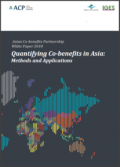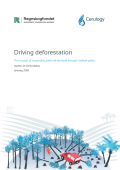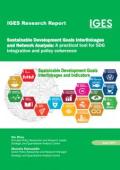
The Paris Agreement and the 2030 Agenda for Sustainable Development have generated a fast-growing interest in strengthening the links between climate change and other development priorities in Asia. Due to this growing interest, policymakers are increasingly looking for tools and methods that can analyse linkages between climate change and development priorities.


While being broadly framed as 17 separate and diverse elements, Sustainable Development Goals (SDGs) and associated targets inherently interlink with one another making up indivisible parts of sustainability from a systemic perspective. Actions or measures taken for achieving one goal may be mutually reinforcing or contradictory with achieving other goals. SDGs and associated targets through the connections among and between each other form a network of interlinkages. Understanding the interlinkages among the goals and between the targets is crucial for integrated governance and policy coherence for the implementation of SDGs. However, existing knowledge about these connections remains limited.

This 2010 review of Japan's environmental conditions and policies evaluates progress in reducing the pollution burden, improving natural resource management, integrating environmental and economic policies, and strengthening international co-operation. It includes coverage of policy for greening growth, implementation of environmental policies, climate change, waste management and the 3Rs (reduce, reuse, recycle), and nature and biodiversity.
The review finds that since the last review, Japan has made steady progress in addressing a range of environmental issues, notably air and water pollution, and the management of chemicals and waste. The energy intensity of the economy has continued to decrease, particularly in the industrial sector, and is among the lowest in OECD countries. Material intensity has also decreased.

This report compares Green Public Procurement (GPP) programs from four leading Asian countries (China, Japan, Korea and Thailand) to understand what the frameworks and key success factors that result in high-impact green and sustainable procurement are. It looks at their commonalities and differences with the goal of informing a more effective implementation of green procurement policies and programs across Asia. It will be beneficial for other countries in the early stages of promoting and implementing green public procurement, and it will give practitioners insights into the tools and approaches used to implement and promote it.
